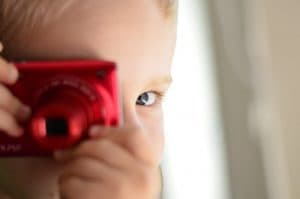Do you know the signs to look for to identify lazy eye in your child?
Amblyopia, commonly known as “lazy eye” is a neuro-developmental vision condition that typically develops before a child turns eight years old.
Lazy eye occurs when one eye is unable to achieve normal visual acuity. The condition causes blurry vision in the affected eye (even with corrective lenses), poor depth perception, and reading difficulties.
- Lazy eye affects up to 3 percent of the population.
- Approximately 10 million children and adults in the U.S. have lazy eye.
A lazy eye is generally difficult to recognize because it usually develops in only one eye, without a noticeable eye turn.
It is important to be aware of the signs that may indicate a lazy eye, since in most cases, the condition is not recognized easily— though it can significantly affect a child’s quality of life.
Contact an eye doctor near you that has experience in diagnosing and treating lazy eye.
The following 7 signs may indicate a “hidden” lazy eye
1. Frequently squints, rubs, or closes one eye
Does your child squint his eyes, or close one eye when outdoors on a bright, sunny day? Does he rub his eye or cover it with his hand?
These may be signs that one eye is weaker than the other, and your child may be trying to find ways to see more clearly.
2. Turns head to one side
Does your child watch TV with his head turned to one side?
Since lazy eye typically affects one eye, a child with a lazy eye may turn his head to utilize his dominant eye to see better. You may also notice that your child turns his head while playing sports or trying to catch a ball, or even while watching live sports games.
3. Reading difficulties
Does your child read below grade level or refuse to read altogether?
A lazy eye can make reading quite difficult— causing loss of place, skipping words, re-reading words, misreading or substituting words, and adding words into sentences.
A child with a lazy eye must exert extra focusing effort to keep the words clear. This additional effort can cause fatigue and reduced concentration while reading. A lazy eye can turn reading into a stressful task, instead of an engaging activity— especially as the words get smaller with higher grade level books.
Schedule an exam with an eye doctor near you to diagnose and treat your child’s lazy eye.
SEE RELATED: Does Amblyopia (Lazy Eye) Affect Eye-Hand Coordination?
4. Math difficulties
Does your child struggle in math? Believe it or not, this may be a sign of a lazy eye.
When a lazy eye develops, the eyes become slightly misaligned. Though it may not be noticeable when looking at your child’s eyes, blurry or double vision can occur, and affect the way math problems appear on a page.
When a child sees a math problem stacked in rows, they may not see the numbers accurately as a result of blurry or double vision— this will affect their ability to solve math problems accurately. Additionally, if the child exerts too much focusing effort, it may distract them from understanding the task at hand, or method of solving the problem.
5. Sports performance difficulties or accident prone
Does your child love to play sports, but for some reason cannot keep up with their peers? Does it seem like your child is frequently tripping, falling, or bumping into things?
A lazy eye can affect depth perception, or the ability to judge the distance or location of an object in space. Without clear depth perception, playing most sports can be quite challenging. Both eyes need to be working together in order to judge where objects are located in relation to yourself.
Without clear depth perception, a child with a lazy eye may also frequently trip over objects, fall down stairs, and maybe even get hit by a moving swing at the park.
6. Reduced fine motor skills
Does your child have messy handwriting?
Lazy eye symptoms such as poor binocular coordination and depth perception, can cause reduced fine motor skills. Binocular coordination enables clear depth perception, and is crucial for all fine motor skills, including legible handwriting. However, with a lazy eye, binocular coordination is reduced.
Without strong fine motor skills, the ability to stay on the line when writing can be a challenge. If your child continually writes above or below the line, their eyes may not be working in coordination.
7. Attention difficulties
Does your child’s attention seem to wander during times they should be focused on a task, such as reading or drawing?
While your child might appear to have an attention problem, in truth, a lazy eye can cause focusing difficulties during activities of prolonged visual focus. Therefore, your child’s inability to maintain concentration during visually-oriented tasks could be a sign of reduced focusing skills, and possibly a lazy eye.
How is lazy eye treated?
If your child has a lazy eye, vision therapy, with or without eye patching or atropine eye drops, is the most effective way to strengthen the affected eye.
Vision therapy consists of a series of eye exercises performed under the supervision of your eye doctor. These exercises help to strengthen the eye-brain connections, to improve the visual skills necessary for binocular vision.
LEARN MORE: Guide to Vision Therapy for Lazy Eye
If your child is showing signs of a lazy eye, schedule an eye exam for a proper diagnosis, and to begin an effective treatment plan as soon as possible.
Vision therapy can help your child gain the confidence he deserves, academic and athletic success he desires, and the ability to view life in a more clear and comfortable way.









